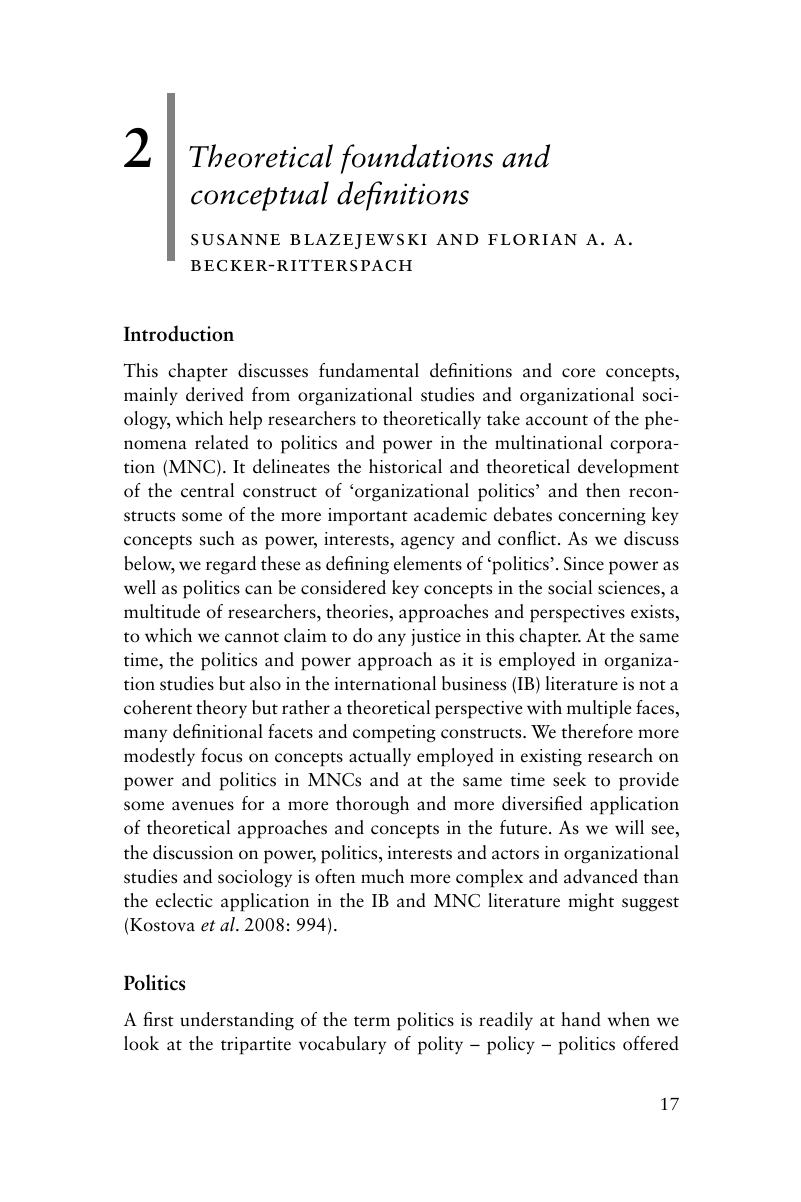Book contents
- Micropolitics in the Multinational Corporation
- Micropolitics in the Multinational Corporation
- Copyright page
- Contents
- Figure
- Tables
- Contributors
- Foreword
- 1 Introduction
- Part I Foundations of politics, power and conflict in MNCs
- 2 Theoretical foundations and conceptual definitions
- 3 The evolution of a politics perspective of the multinational enterprise – past developments and current applications
- Part II Seminal contributions
- Part III Analytical tools and applications
- Part IV Reflections and new directions for research
- Index
- References
2 - Theoretical foundations and conceptual definitions
from Part I - Foundations of politics, power and conflict in MNCs
Published online by Cambridge University Press: 05 June 2016
- Micropolitics in the Multinational Corporation
- Micropolitics in the Multinational Corporation
- Copyright page
- Contents
- Figure
- Tables
- Contributors
- Foreword
- 1 Introduction
- Part I Foundations of politics, power and conflict in MNCs
- 2 Theoretical foundations and conceptual definitions
- 3 The evolution of a politics perspective of the multinational enterprise – past developments and current applications
- Part II Seminal contributions
- Part III Analytical tools and applications
- Part IV Reflections and new directions for research
- Index
- References
Summary

- Type
- Chapter
- Information
- Micropolitics in the Multinational CorporationFoundations, Applications and New Directions, pp. 17 - 50Publisher: Cambridge University PressPrint publication year: 2016
References
- 5
- Cited by

